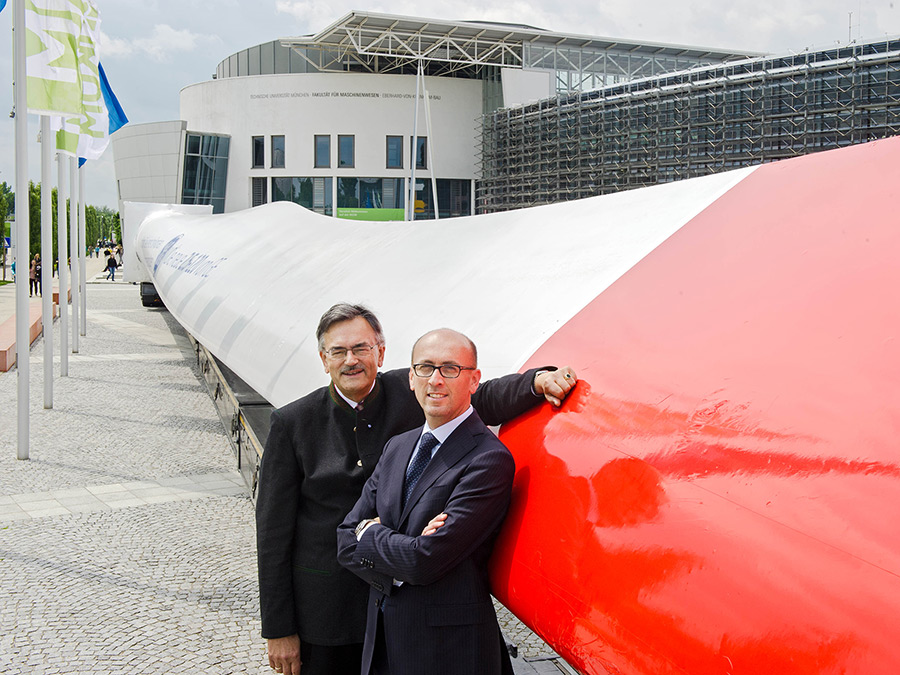New chair for wind energy research for TUM.Energy
TUM strengthens wind energy research

While wind energy in the North German Plain was easy to develop and the continuous, strong winds bring high returns, development in states such as Bavaria is much more difficult. Tapping of sites with lower wind conditions needs technically more efficient turbines. For mountainous terrain, new control concepts have to be developed, because much stronger fluctuations occur.
More than 30 chairs of various faculties of the Technische Universität München are active in the field of wind energy. The projects range from optimization of aerodynamics, to mathematical modeling of high wind risks and to non-destructive testing of tower and rotor blades. Landscape architects study the harmonious integration of wind turbines into the cultural landscape, mechanical engineers work on the minimization of drive-train losses, electrical engineers optimize the control technology.
"If we want to make the ‘energy turnaround’ a success, we must unite our forces beyond the traditional disciplines," says TUM-President Prof. Wolfgang A. Herrmann. "With Professor Bottasso we were able again to win an internationally recognized expert."
"My academic roots are in helicopter technology. But from there it is not far to wind energy,” says Professor Carlo Bottasso, previously employed at the Politecnico di Milano (Technical University of Milan). "But while there are a variety of possible applications and missions for helicopters, power generation from wind is clearly dominated by one goal: to produce electricity as cost-effectively as possible." His main goal now is first of all to unite the existing expertise and collaborations and form a strong network of internal and external experts.
The chair’s research is assigned to the “Renewable Energy” group within the research initiative TUM.Energy, coordinated by the Munich School of Engineering, one of the four Integrative Research Centers at TUM. Here it is linked to related topics such as new materials, grid integration, energy storage and many more. But also for TUM’s Munich Center for Technology in Society (MCTS) wind power is an issue, because the citizens of the regions must be won to support a further expansion of wind energy.
Further cross-links include the research program "Energy Valley Bavaria" set up by the Ministry of Science, which will invest ten million euros in the coming years, as well as the Wind Energy Research Network South (WindForS). Here the TU München, along with other southern universities and research institutions, advocates for the establishment of a wind turbine test field.
In addition first TUM spin-offs are working in the area of wind energy: The company fos4X develops fiber-optic sensors for load monitoring of rotor blades. Ascending Technologies GmbH produces mini helicopters that are used for the optical inspection of rotor blades.
Contact:
Prof. Dr. Carlo L. Bottasso
Chair for Wind Energy
Technische Universität München
Boltzmannstr. 15, 85747 Garching, Germany
E-Mail - Web (under construction)